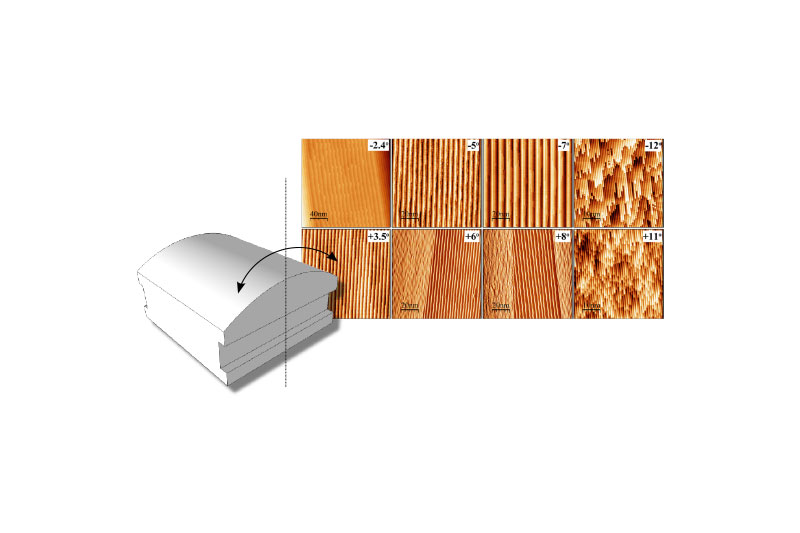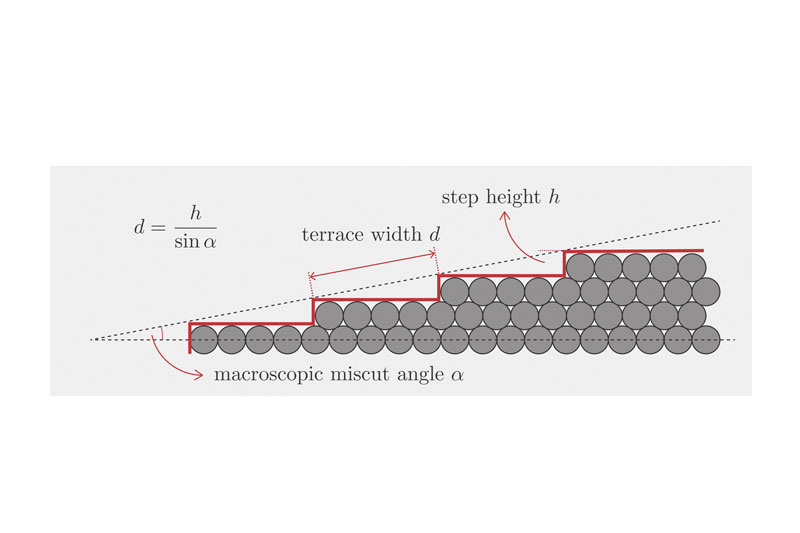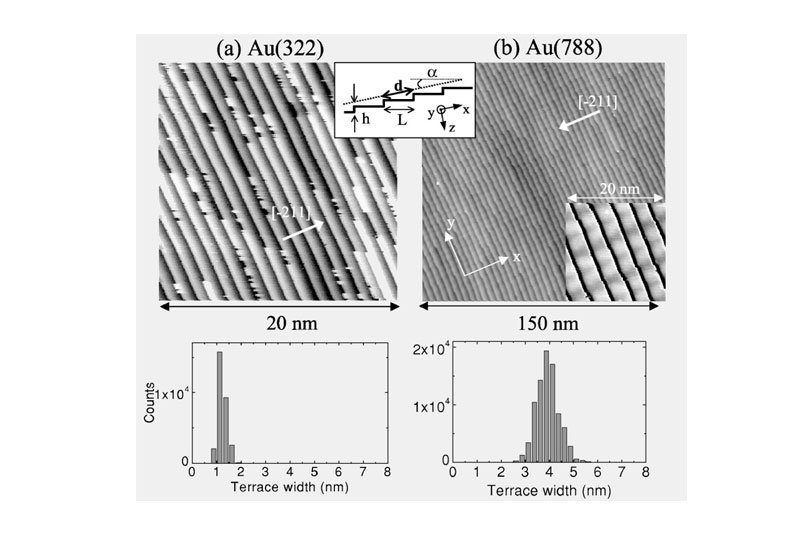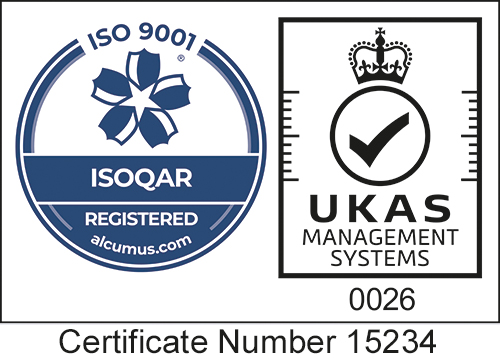Curved Crystals
Enabling multi-vicinal surface analysis. All surface orientations in a single sample.
Surfaces whose normal deviates slightly from a high-symmetry direction are called vicinal surfaces. Vicinal surfaces are characterized by a regular array of atomic steps, and the miscut angle α — i.e. the angle of deviation from the high-symmetry direction — determines the terrace size, as shown in this schematic.
The figure in the gallery shows scanning tunneling microscopy images of two different vicinal Au(111) surfaces. The surfaces are made up of equally spaced steps. From the histograms the characteristic terrace width d can be determined (about 1nm and 4nm).
Application
Vicinal surfaces are very interesting from a scientific point of view: due to the lower coordination of their atoms, steps are very often preferred adsorption sites, making vicinal surfaces useful as growth templates for the self-assembly of 1D (wires, stripes) and 0D (dots) arrays [1, 2, 3, 4, 5], as well as model surfaces for research in heterogeneous catalysis [6, 7]. Steps can strongly affect thin film growth, introducing uniaxial properties in the film, e.g. magnetic anisotropy [8, 9], fixing single azimuthal domains in sufficiently narrow terraces [10, 11, 12, 13] or enabling step-flow that leads to perfect layer-by-layer growth [14, 15].
Vicinal surfaces also serve to investigate the fundamental properties of electrons in 1D or 2D superlattices, in which the surface’s steps act as potential barriers for the electrons, creating a rich surface electronic structure [16, 17, 18, 19, 20].
In a curved surface the miscut angle — i.e. the nanoscopic step density — is made to vary in a selected range. A single curved surface therefore can be seen as containing many different vicinal surfaces. For instance, miscut angles in the range of 1 to 15º degrees result in terrace widths from around 100Å down to 10Å.
Curved crystals are therefore very useful for the study of properties that depend on terrace width (e.g. surface electron behavior), since they drastically reduce the time and resources required and provide a rational framework for exploring the surface science of these exotic surface orientations.
Request a quotation or further information








